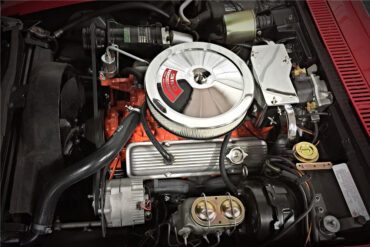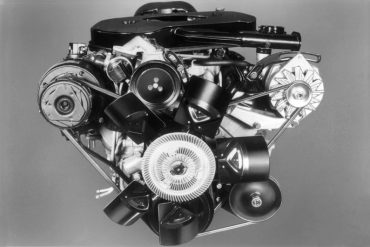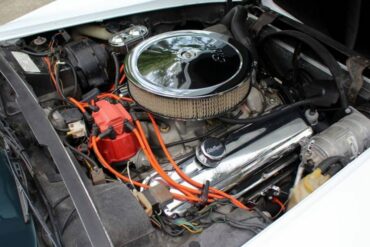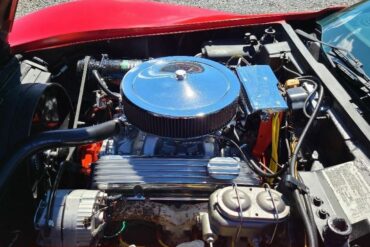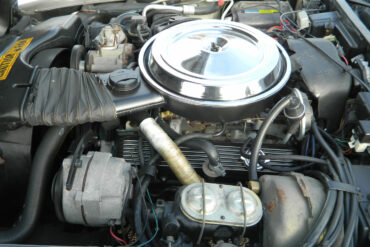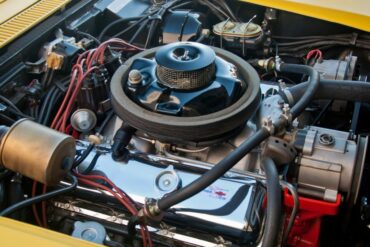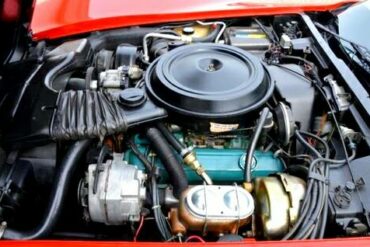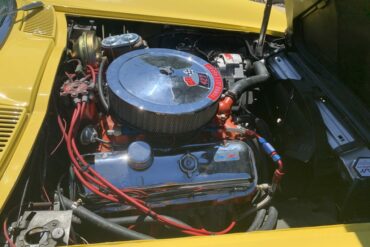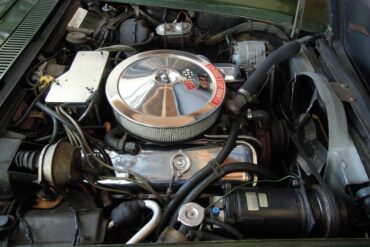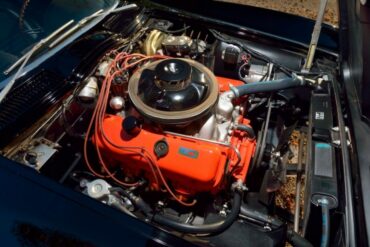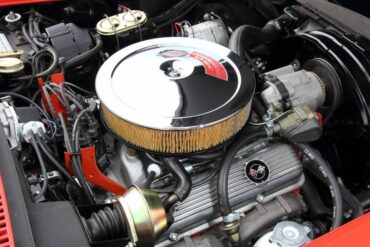The 350ci V8 was actually a further extension of GM’s decade-old small-block engine series. In a bid to further cement the Corvette’s performance legacy, subsequent modifications to these earlier engines were made, thereby giving birth to one illustrious platform. It would serve as a mainstay of the Corvette line for over three decades to come.
Offered for only two years (1982, 1984), the L83 featured GM’s newly designed Cross-Fire Fuel Injection system and is often referred to by critics as being one of the most unworthy engines to ever find its way under the Corvette’s hood. However, this begs the question of whether or not the L83 was truly deserving of this mockery.
Was the 454 cubic-inch LS4 one of General Motors’ most powerful big-blocks? Absolutely not. However, it is historically significant nonetheless. The LS4 served as the end of the road for the big-block Corvette, as America’s sports car returned to its small-block roots. Today, many collectors seek out LS4 equipped Corvettes.
Finally, in 1973, consumers were left with only three available engine options, two of which were of a small-blocks. The third was the 454 cubic-inch LS4, would only survive for two years, serving as the final big-block to grace the Corvette’s engine bay. By 1975, the Corvette was only offered with one of two engines, of which, the 350 cubic-inch L82 was the most formidable.
During many production years, consumers were provided with multiple engine options to choose from. This was especially true during the late 1960s. However, by the late 1970s, GM had begun to significantly scale back the number of production engines offered for the Corvette. This trend peaked in 1981, when only one engine, known as the L81, was offered to buyers.
The Vette’s performance dropped significantly during the early to mid-1970s, at the hands of newly implemented federal emissions standards, yet it remained relevant. At a point in which many iconic American performance cars fell by the wayside, the Corvette soldiered on. This served as a true testament to many of the memorable Corvette powerplants that were developed during the C3 era.
GM found itself facing a critical question of sorts. Should the industry giant forgo the sale of Corvettes in California during 1980 or attempt to rectify a troubling situation. In the end, buyers in California would be able to purchase a Corvette, albeit with a variation of the same engine that was offered in Chevrolet’s passenger cars of that era, the 305 cubic-inch V8.
Upon its 1953 release, America’s sports car mustered only 150 HP, yet in 1966, the newly evolved Corvette nearly tripled this level of output. It was in 1966 that the Corvette was offered with not one, but two different variants of the robust 427 cubic-inch (7.0L) V8. In its most potent form (L72), the 427 officially produced 425 HP. However, most believe this value to be grossly understated.
General Motors sought out any means of retaining the Corvette’s performance acuity. This desire ultimately gave rise to the company's illustrious LS5 454 cubic-inch big-block. The 454ci LS5 is remembered as one of the final GM big-block offerings to have come out in the 60’s and 70’s.
No list of formidable Corvette engines would be complete without including the 1967 L88. The L88 was a fire-breathing variant of GM’s 427 cubic-inch big-block lineup, which served as nothing short of a production race engine. Officially rated at 430 HP, the L88 was capable of propelling its C2 host to previously unattainable performance status. The L88 was nothing, if not a loosely veiled production race engine.
The LT-1 served as a revised version of GM’s famed 350 cubic-inch platform, and is often heralded as one of the manufacturer’s most beloved small-block powerplants. Though quite legendary in status, the LT-1 was rather obscure and short-lived during its production run, only produced for three years (1970-1972).


